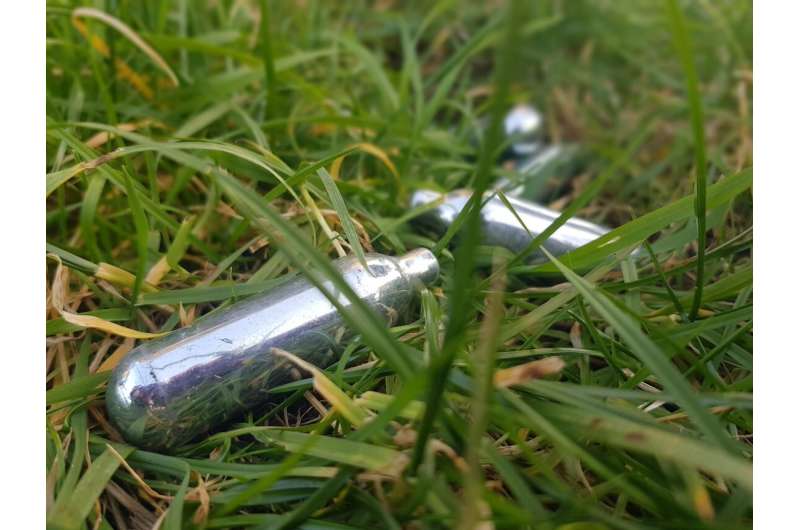This article has been reviewed according to Science X's editorial process and policies. Editors have highlighted the following attributes while ensuring the content's credibility:
fact-checked
trusted source
proofread
Surge in nitrous oxide abuse: New guidelines to help clinicians recognize cases and prevent spinal cord damage

Recommendations from research published today on the diagnosis and treatment of spinal cord damage caused by nitrous oxide abuse have been simultaneously adopted as official clinical practice guidelines by the Association of British Neurologists. The unprecedented speed in translating research into practice is necessary as medical cases of nitrous oxide abuse surge in parallel with increased use of what is now the second most popular recreational drug among young people in the UK.
The guidelines are published in Practical Neurology.
Recreational use of nitrous oxide (N2O—also known as laughing gas) can lead to subacute combined degeneration of the spinal cord (N2O-SACD), a condition that can cause serious and permanent disability in young people. While it may be treated effectively if recognized early, it is commonly misdiagnosed and inappropriately treated. No agreed treatment guidelines have previously existed.
The new research is based on a project to improve diagnosis and treatment of N2O-SACD at the Royal London Hospital, where a new case presents, on average, once a week. A large majority of patients present with inability to walk, falls, and tingling or loss of sensation in their feet and hands. Other symptoms included weakness and bladder or bowel urgency or incontinence. Importantly, patients often do not mention nitrous oxide use, possibly because they do not connect it with their symptoms, or because they feel there is stigma associated with disclosing its use. Authors suggest that clinicians should be aware of the prevalence of nitrous oxide abuse in their local area, and make careful enquiries to determine whether nitrous oxide abuse may be causing the symptoms.
Senior author Alastair Noyce, Professor in Neurology and Neuroepidemiology at Queen Mary, and Consultant Neurologist, said, "We developed these practical guidelines to try to standardize care for patients who have come to harm from recreational nitrous oxide use. If implemented correctly, they will ensure that patients get the treatment they need. We hope they will also alleviate pressure on hospitals by improving efficiency in the emergency department and reducing unnecessary admissions."
Professor Tom Warner, President of the Association of British Neurologists, remarked, "Recreational use of nitrous oxide carries a significant risk of damage to the nervous system, particularly the spinal cord, which is treatable if picked up. These important clinical practice guidelines lay out how to recognize, diagnose, and most importantly, treat those people attending emergency departments with such symptoms, and prevent long-term neurological disability."
More information: Nitrous oxide-induced subacute combined degeneration of the cord: diagnosis and treatment, Practical Neurology (2023). DOI: 10.1136/pn-2022-003631




















